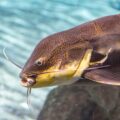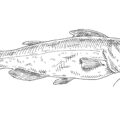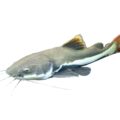The most important difference between catfish and halibut is their appearance. Interestingly, both fish have a unique, uncommon appearance among other fish. Also, catfish and halibut have different habitats and sizes, making it hard to confuse the two. Catfish and halibut are famous for sport fishing, which people have been catching for years. These fish are very different in every possible way, but they are still equally important.
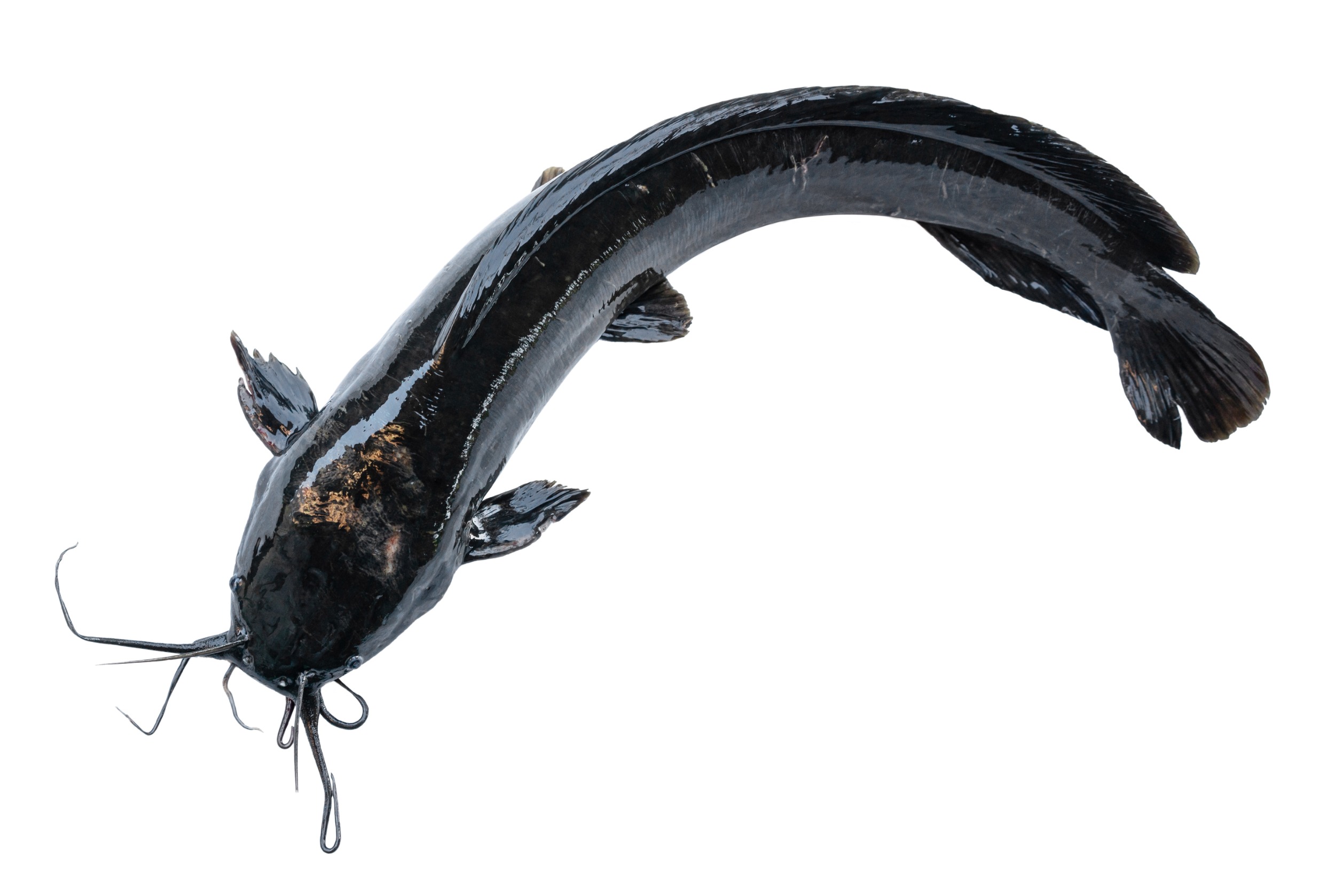
Differences Between Catfish and Halibut
To start, catfish belong to a huge family, and there are hundreds of species of catfish that you can find. However, when it comes to halibut, there are three types of halibut fish, two of which are the most common, the Atlantic halibut and Pacific halibut, and the third halibut, the Greenland halibut.
This is just the basic difference between catfish and halibut. Here is the detail about their appearances and much more below.
The Appearance
The catfish and halibut are unique fish, and both catfish and halibut are not similar in appearance.
Catfish
The unique thing about catfish is that they are completely scaleless fish. The catfish do have fins, but they do not have any scales. Catfish also have a cylindrical body often covered in mucus, which allows the catfish to breathe through its skin as well. The catfish is known to have a large head and body, which results in negative buoyancy, so the fish sinks instead of floating.
The catfish has its name due to its barbels resembling a cat’s whiskers and the sometimes purring sound it makes when taken out of the water. When it comes to the color of the fish, the top is often darkly colored in grey, brown, or almost black, and the bottom of the fish is white or off-whitish. This is to hide from the predators in each direction.
Halibut
The halibut has scales unlike the catfish, but they are invisible to the naked eye, so it seems like a scaleless fish. Another interesting thing about halibut is its color and eyes on one side of the fish. Usually, it is only the right side.
When the fish is born, it is symmetrical with eyes on both sides, and this is the case until the fish becomes six months old. At this time, one eye from one side of the fish migrates to the other side, and the eyes are fully set when the skull is fully ossified. The side with the eyes darkens to resemble the fish’s top, while the other side remains white. Like catfish, this color scheme allows the halibut to blend in with the ocean floor from the top and the light from below, hiding it from predators. The fish is usually brown, blackish, or deep green.
The Habitat
There will be some overlap between them, considering the number of catfish found in various waters.
Catfish
The catfish is found in waters worldwide except Antarctica because the temperature is just too low for the catfish to survive there. The most well-known catfish is the channel catfish, located mainly in Florida in the United States, but there are many other species, such as Basa and Swai catfish which are found in Vietnam, and Mekong catfish, which is found in Japan. These are just some of the places catfish are located, but it is most concentrated in South America, Africa, and Asia.
When it comes to the water, the catfish sinks, as we know, and the fish habituates at the bottom of the water. They are mostly found in shallow yet running water. At the bottom, the fish can navigate all kinds of substrates, especially muddy substrates, where they can hide well.
Halibut
The habitat for the halibut depends on the three species of halibut. The Atlantic halibut is found in the eastern and western parts of the North Atlantic Ocean. When it comes to the Pacific halibut, it is in the eastern and western parts of the North Pacific Ocean.
Lastly, Greenland halibut is in the Arctic and near-Arctic parts of the Atlantic and Pacific oceans. These three species are distributed all over the oceans. In the ocean, they are found at the bottom of the sea bed, where they look for food and live.
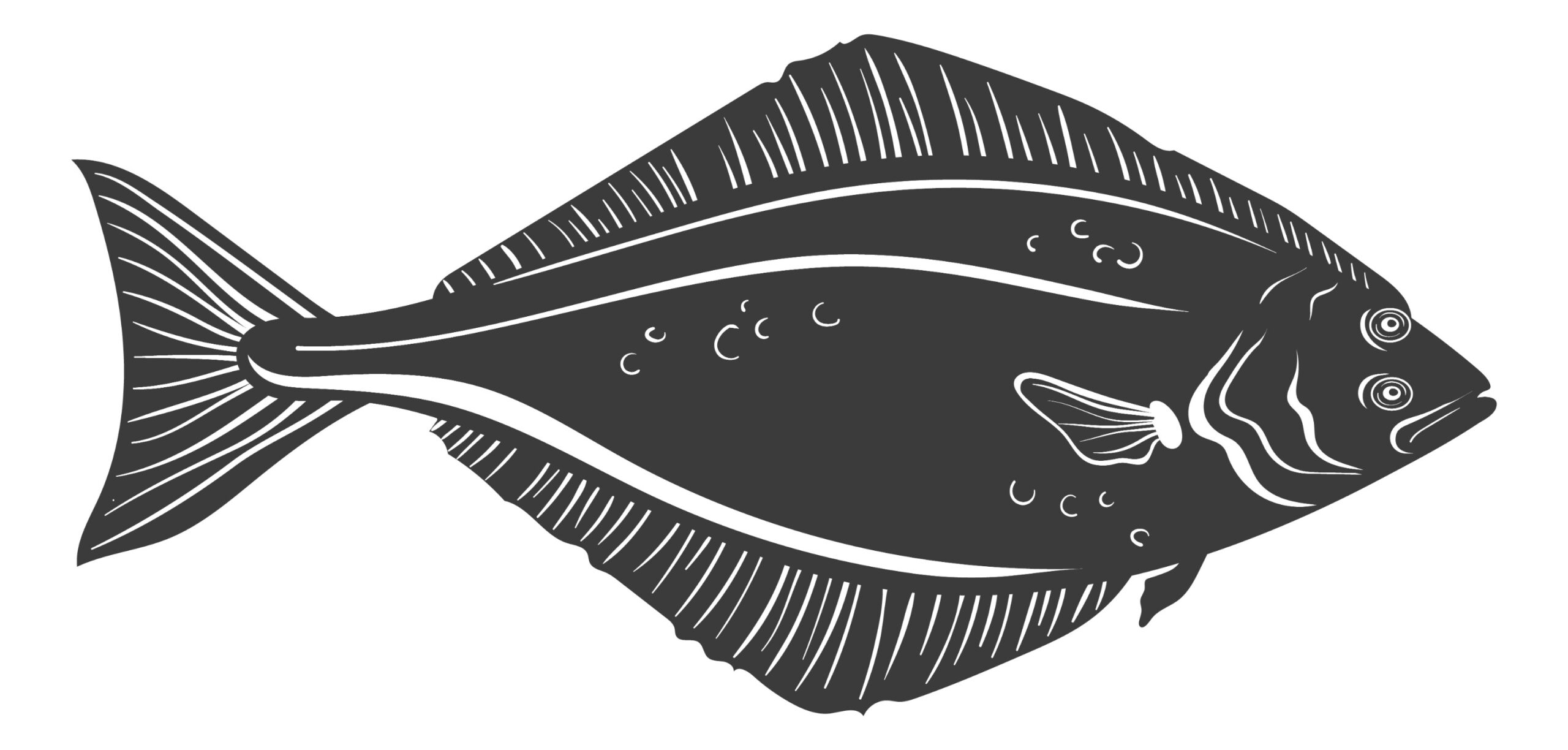
The Size
Catfish
The size of catfish varies a lot and varies the most in bony fish. You can expect most catfish sizes to be around 4.7 inches. The smallest catfish species are the Asian stone catfish, which only gets about 1.3 inches and is a popular fish to keep in aquariums. On the other hand, Wels catfish and Mekong giant catfish are known to be pretty large.
The largest Mekong giant catfish was caught in 2005. It was 9.8 feet in size and weighed 646 lbs. It also got the world record for the largest freshwater fish ever caught. Some catfish get this big because they have a very long lifespan; the Mekong giant catfish has a lifespan of 60 years.
Halibut
The halibut is not a small fish either, with the Atlantic halibut being the largest flatfish in the world. The Atlantic halibut can reach a size of over 8 feet and weigh 515 pounds, which is the largest Atlantic fish size caught in 2013.
The Pacific halibut gets bigger than 8 feet in size and weighs 800 pounds, so it is just a short distance from the Atlantic halibut. The Greenland halibut is the smallest among the halibut, as it gets around 59 inches in size and weighs around 73 pounds. All halibuts have a very long lifespan of around 70 years.
The Diet
Catfish and halibut have very different diets because of their various behaviors. So, here we will outline the difference in their diets.
Catfish
Catfish is an omnivorous fish which is an opportunistic feeder. The catfish feeds on whatever it finds because it is not that great of a hunter. The catfish usually stays hidden in caves and only emerges when it sees small enough prey. The catfish is a bottom feeder, so it stays on the substrate and looks for food there; the fish also feeds on leftover food left by other large fish.
Normally, the catfish diet includes crustaceans, small fish, algae, mollusks, insects, larvae, seeds, and other animals like frogs, snakes, and occasionally even birds. This is possible for catfish because they are mostly found in shallow water, where they can encounter birds and snakes. The catfish does not stray very far when looking for food and likes to stay safe, and does not attack anything bigger than itself.
Halibut
The halibut is a predatory fish whose diet consists mostly of fish. The Atlantic halibut is a massive fish, so it is at the top of the marine food chain, which means it does not have many predators, so the fish can eat whatever it wants. The halibut usually occupies the bottom of the ocean, but it does venture up when looking for food. When the halibut is a juvenile, it eats small crustaceans and bottom-dwelling fish, but its diet also expands as it grows.
The halibut diet can include sand lance, octopus, crab, salmon, hermit crabs, lamprey, sculpin, cod, pollock, herring, and flounder. The halibut is also a cannibalistic fish, so it will eat other halibuts as long as the other halibut is smaller than them. The diet of all three halibut is similar regardless of where they come from.
The Reproduction Method
The reproduction method of halibut and catfish is similar in some ways, but it also has some differences. Here are the variations and similarities.
Catfish
The catfish reproduces simply because they need to reproduce quickly and easily. The catfish is a very abundant fish, after all. It starts with the male or female catfish building a nest for the eggs and fry. After that, the male catfish and female catfish swim together. The male releases sperm in the water, and the female releases eggs, where the eggs are fertilized outside the body.
The fertilized eggs are moved to the nest, and one of the parents, usually the male, protects them and derives the female catfish out of the nest. The male catfish allows the fry to grow and defend against other bigger fish until they are independent and big enough to swim and feed independently. Depending on the species of the catfish, they reproduce all year long.
Halibut
The halibut only reproduces during the winter months, from November to March. Before reproducing, they move into deep water. Reproduction only happens when the male and female mature, which can take several years. For pacific halibut, males sexually mature at the age of 8, and females sexually mature at the age of 12.
After that, the reproduction method is similar to catfish. They reproduce externally, with the female halibut releasing eggs in the water and the male halibut releasing sperms to fertilize the eggs. A female halibut can simultaneously release anywhere from a few thousand to several million eggs.
The Nutritional Composition
Both catfish and halibut are famous delicacies eaten by people worldwide, especially in places where they are abundantly present.
Catfish
To start, the calory density of catfish is 2.29. The protein in a serving-size portion of catfish is 16 grams, and the carbohydrates are 7 grams. The catfish also has 12 grams of fat and a little bit of fiber. The catfish has higher vitamin B12 than halibut and vitamin B5 and phosphorus. The catfish is also higher in potassium, folate, and vitamin B3.
Halibut
Halibut’s calory density is 1.1 for a serving size which is lower than the same serving of catfish. The halibut is much higher in protein as it has 38 grams of protein and no carbohydrates or fiber. The fat in halibut is much lower as well, with only 4 grams. Also, halibut has more Selenium, Vitamin B6, Iron, and Monounsaturated Fat than catfish.
The Taste
The taste of both fish is amazing, but they both have inedible skin that needs to be removed before cooking or eating. The skin gets very tough and also absorbs a lot of the chemicals.
Not all species of catfish are considered edible, but most are. The catfish meat is said to be slightly sweet but mostly tasteless with very large flakes. The fish meat is perfect for grilling, absorbing many marinades, and tasting amazing.
When it comes to halibut, its meat is lean, so there is a chance of overcooking it, which means the preparation is a little more complicated. It is a mild fish as well, with slightly sweet fish flakes. Halibut is a fish that has no fishy taste, which makes it good for people who avoid fishy-tasting fish.
Conclusion
In conclusion, catfish and halibut are amazing fish that are very popular as sport fish and for eating. They are the same in a couple of ways, but their differences make them unique.

